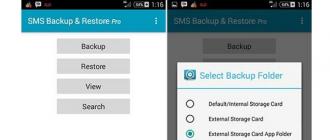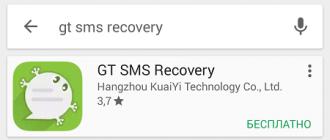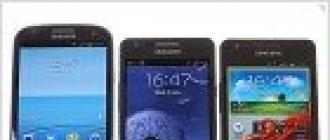Virtual disks are software emulated devices that can be used to open virtual disk images. This is sometimes called the files obtained after reading information from physical media. The following is a list of programs that allow you to emulate virtual drives and disks, as well as create and mount images.
Daemon Tools is one of the most common programs for working with disk images and virtual drives. The software allows you to create, convert and burn files to discs, emulate drives for playing information from optical media. In addition to CD and DVD devices, the program can also create virtual hard disks.

Daemon Tools includes the TrueCrypt utility that allows you to create encrypted password-protected containers on your computer. This approach helps to preserve sensitive information and protect it from intruders.
Alcohol 120%
Alcohol 120% is the main competitor of the previous reviewer. The program, like Daemon Tools, is able to remove images from disks, mount them into emulated drives and write files to discs.

There are two main differences: the software allows you to create images from files and folders, but is not able to emulate the HDD.
Ashampoo Burning Studio
Ashampoo Burning Studio is a combine for working with CDs and their images. The program is focused on converting, copying and recording audio and video to discs, creating covers for discs.

One of the key features is the ability to create archives with backup copies of files and folders, from which, if necessary, you can restore important information.
Nero
Nero is another multifunctional multimedia processing program. Able to burn ISO and other files to discs, convert multimedia to various formats, create covers.

A distinctive feature is the presence of a full-fledged video editor, with which you can perform editing: cutting, applying effects, adding sound, and also creating a slide show.
UltraISO
UltraISO is a program designed exclusively for working with disk images. Allows you to take images from physical media, including hard drives, convert and compress the finished files.

The main task of the program is to create images from files and save them to a computer or write them to discs or flash drives. Among other things, the program has a function to create a virtual drive for mounting images.
PowerISO
PowerISO is a program similar in functionality to UltraISO, but with some differences. This software can also create images from physical disks and files, edit ready-made ISOs, "burn" discs and emulate virtual drives.

The main difference is the grabbing function, which allows you to digitize music recorded on an audio CD with high quality and losslessness.
ImgBurn
ImgBurn is a software aimed at working with images: creating, including from files on a computer, checking for errors and recording. It does not have a pile of unnecessary functions and solves only the problems mentioned above.

DVDFab Virtual Drive
DVDFab Virtual Drive is an extremely simple program designed exclusively for creating a large number of virtual drives. It does not have a graphical interface, so all actions are performed using the context menu in the system tray.

The programs presented in this review can be divided into two parts: the first is software for working with images, and the second is virtual drive emulators. As you may have noticed, most developers tend to combine both of these functions in their products. Despite this, each category has bright representatives, for example, UtraISO is indispensable for creating and editing images, and Daemon Tools is great for emulating virtual media - CD / DVD and hard drives.
Free software for creating virtual disks and working with them. DAEMON Tools Lite also supports image files created by other programs (Alcohol 120%, Nero, etc.).
It's so good that in our modern life there is a place for such a useful invention as cDs... They are inexpensive, easy to transport, and relatively durable. However, this durability is only possible if a number of conditions are met. We often neglect them and, as a result, we get a non-working disk, which then can only be used to decorate the room :-)
It also happens that we cannot play our favorite game or use the required program without a disc. No matter how hard we try to preserve it, over time it will become unusable. To get rid of this problem once and for all, you need to use special drive emulators.
One of the most widespread and, most importantly, free emulator is the program Daemon tools... It exists in three versions, but only free Daemon Tools Lite... We will talk about it.
Daemon Tools Lite virtual disk installation
So, you have downloaded the installation distribution of the program. Run installation... You will be offered choose language programs (choose Russian ;-)). Then the standard Installation Wizard... Here you will read, and accept the license agreement, and also you will be asked integrate panel Daemon Tools into the browser, and make the Daemon Tools home page. I would recommend that you abandon all these additional settings (it's annoying every time you want to get into the Internet, turn off the Daemon Tools page - it gets boring!).
Installed! On the desktop and in the tray will appear label programs.
Launching Daemon Tools Lite
You will control the program from the tray, so the shortcut from the desktop, if desired, can be removed.
In the folder "My Computer" you will have another DVD drive.
This is why we installed the program. You can create such drives with Daemon Tools Lite up to 4 pieces... The program supports many image file formats: * .b5t, * .b6t, * .bwt, * .ccd, * .cdi, * .cue, * .nrg, * .pdi, * .isz, and can also create them itself in the following formats: * .mdf / mds (native program format) and * .iso (standard image file). This means that with Daemon Tools you will be able to open images created earlier using programs such as Alcohol 120, Blind Write, Nero, etc.
You can manage the program by right-clicking on the tray icon. The following will open menu:
The program has Daemon Tools panelthat simplifies access to many features. But more about her later.
Let's see the tab Virtual CD / DVD-ROM... Here you can set the number of drives (from 1 to 4), as well as mount an image on a virtual disk. To do this, go to the first option ( Drive 0: No data) and press "Mount Image"... A Windows Explorer window will open, in which you will select the desired image file, and then click "Open"... All!!! The virtual disk is ready for use. Now you can open it, copy it or run applications installed on it. You can do the same with three more possible drives: add support for one more drive and mount the image on it.
Daemon Tools Lite settings
Now consider the tab "Settings".
IN "General" You can configure those parameters that relate to the launch of the program. "Autostart" allows you to download Daemon Tools along with the system. "Automatic connection" - this is something like autoloading a disk image for user convenience. If you have the option to check for updates enabled, the program itself will notify you about a new version. The disk image can be locked by one of the locking systems. In this case, it will not start. This can be checked in advance by ticking the option Image Lock Check... Now, if the image is locked, the program should display a message indicating the encryption algorithm. Knowing it, you can bypass the protection. Also here you can configure tongue programs.
IN "Panel options" You can:
- enable or disable the Daemon Tools panel;
- put it up;
- show the panel on top of all windows;
- configure its integration with the desktop;
- configure the display of the panel after double-clicking on the program shortcut in the tray.
IN "Settings" in the tab "Hotkeys" You can customize the buttons for quick access to the Daemon Tools panel and mount / unmount virtual drives. In the tab "Integration" you can check the boxes for those disk image formats that will automatically open using Daemon Tools. In the tab "Compound" you can set up an Internet connection to access the manufacturer's website through a proxy server. And finally, the most fun in the tab "Additional"... Here you can configure the encryption algorithms that Daemon Tools will bypass when creating images of protected disks. The list is small, but the fact that it exists at all is already pleasing !!!
Now let's get back to what I promised to tell you earlier. it daemon Tools panel.
Its presence can greatly facilitate the life of any user. As they say, from right to left :-). The first thing we see is the search bar Daemon Search... With its help you can search the Internet using it as a search engine.
The next section of the panel contains two buttons: Mount "n" Drive and "Creating an image"... The first allows you to quickly mount an image to a virtual floppy drive. You just need to click it and in the window that opens, click on the icon "To add a file"... After the image is added to the list, you can quickly load it by double-clicking. "Creating an image" allows you to make an image of any of your discs yourself. To do this, press the button and select the drive in which you have the disc. After that, select the disk reading speed and the final save path on the computer (by default: C: \\ Documents and Settings \\ All Users \\ Documents \\ DAEMON Tools Images \\ NewImage.mds). You can also customize name and format disk image (* .mds or * .iso). To do this, click the button located near the line with the save path and below, under the Explorer window, in the first window enter the name, and in the second select the file type.
The next section of the panel allows you to enter customization, which we have already talked about.
The last window displays availability in virtual drives disks... If you click on this window with the left mouse button, an explorer window will open, where you can select the desired image file. Also on this panel there is up arrow button... By clicking on this button, you will see a small window in which there will be an option unmount all drives... After clicking on this button, all virtual disks are automatically unmounted. This is useful, for example, if you need to quickly increase the performance of your system, since each virtual disk requires memory allocation.
Here is such a good program for us. Of course, this is not such a "monster" as, for example, Alcohol, which is preferred by many users, but for your daily work you don't need much. This is a great option for owners of systems that do not have disk drives (old computers, netbooks, etc.), as well as those who save every megabyte of RAM and physical memory on their computer!
P.S. This article is intended for free distribution. It is encouraged to copy it while maintaining the authorship Ruslana Tertyshny and all P.S. and P.P.S.
Last week we asked you to share your favorite disk image tools, then we rounded up the five most popular responses for a vote. Now we "re back to highlight your favorite. DAEMON Tools led the pack by a comfortable margin with 40% of the vote.
Softpedia.com DAEMON Tools Lite is a software solution that will impress you, especially thanks to its advanced features that can deal with virtually all image formats on the market. Reliable application that creates virtual drives on your computer, providing you with the possiblity to emulate CDs and DVDs for instant access.
PCWorld.com If you spend a lot of time swapping and hence waiting on CDs or DVDs to mount, Daemon Tools Lite is worth its weight in gold. Even if you don "t, it" s a program you should download to keep in your bag of tricks - you "ll find a use for it eventually.
Download.com The advantage is that you can burn the images you "re using with DAEMON Tools Lite right away or just test an image before burning it to see if it was created correctly. DAEMON Tools Lite works with most image formats.
Filecluster.com Pros
- Small and highly stable program.
- Low resource requirements.
- Simple and functional interface ...
Software.Informer.com DAEMON Tools Lite manages to be more comprehensive and feature-rich than many of its competitors. And that "s quite remarkable, especially considering that DAEMON Tools Lite is free while many of its competitors are not.
downloads.tomsguide.com As a disc imaging tool, Daemon Tools Lite "s free nature automatically makes it a lot better than many competing applications simply because it offers most of what they offer at the vastly reduced price of free.
www.techadvisor.co.uk When you have a disc that you know you "ll need to access regularly, then, DAEMON Tools Lite allows you to create an image in just a couple of clicks. This then shows up in its Image Catalog for speedy reloading later, and you can put the real disc away.
techgyd.com Daemon Tools Lite is one of the best software for emulating and organizing your disc images. The software is very easy to use and fulfills all your disc related requirements. The virtual drives support is amazing.
maddownload.com If you are looking for the best software to work with ISO, MDX, MDS, and MDX files? Well, you have come to the right place. DAEMON Tools Lite is an easy and ready to use downloadable software compatible with Windows. It is well known reputable software that gives you the power of having a DVD-ROM emulator right into the comfort of your own home.
GIGA.de Mit dem Daemon Tools Lite Download könnt ihr virtuelle Images erstellen, speichern und einbinden sowie virtuelle Laufwerke emulieren.
Users who found the early "zero" probably remember the days when films, computer games, programs and music were delivered to our computers only with the help of CD / DVD disks that were widespread at that time. Nobody knew about free downloading of data on the Internet, torrents and youtube. The situation was rescued by optical drives, with the help of which information was transferred to the hard disk of the computer.
The rapid development of Internet technologies has called into question the need to have such a component as a "floppy drive". In today's stationary systems and laptops, you rarely see a drive. All because of virtual disks, which supplanted the "blank" and became common. However, not everyone made the comfortable transition to the new technology. In this article, we will try to correct this situation and explain in detail the essence of the creation process, the nuances of use, and other questions that have repeatedly arisen from everyone who does not know how to use a virtual CD ROM.
When you may need it
Many may doubt the idea of \u200b\u200busing the innovation that has taken root to some and simply continue to use the optical drive, rewriting images and information with it on physical media. However, the archaic version loses in some cases, the most common of which are:
- Missing or defective drive. Any part does not have an eternal life. Sooner or later, a problem may arise, and it’s good if it does not happen at the most necessary moment (which, according to the “law of meanness”, happens often). In addition, the "system manager" who receives a disc with information from you may simply not have an optical drive. But a virtual CD-ROM is on any modern PC (if you devote some time to creating it).
- Multichannel. I rarely came across computers in which there were several drives at once. Users, who often work with recording and reading discs, had to constantly rearrange CD / DVD. There are no such problems with virtual disks, which means you can work with several at the same time.
- Convenience of data transfer. To exchange information recorded on a "blank", you need to personally transfer the media to the receiving party. In the case of virtually recorded images, the transfer is carried out online, over the Internet.
Creating a virtual CD-ROM
To read virtual images (iso files; mdf, bwi, mds and others), you need to create a virtual CD-ROM that, like an optical drive, reproduces (emulates) data from the drive. You can make a virtual disk using special software, such as Daemon Tools, Virtual Drive, Their principle of operation is identical, and the functionality is largely similar. As an example, we took the last of the listed, since its capabilities and tools are very easy to cope with even for a user far from such processes.
- First, download the installer for the Alcohol 120% program from the link from the Yandex disk, or on the developer's official website. Install it on your computer.
- We launch the program. First of all, we need to create a virtual CD drive. To do this, in the "Settings" section, select the option "Virtual disk".
- In the menu that opens, manually select the number of created virtual disks. We confirm the result by clicking on the OK button.
The drive has been successfully created, which we can observe in the "Device" panel or in the "My Computer" folder.
- Now let's open the finished image. To do this, select the "File" tab, and in the menu that opens, click on "Open ..." (or just use the key combination Ctrl + O).
- Find the image file we need, select it with LMB and click on the "Open" button.
The image has been added to the library for processing.
- Now you need to read the file added earlier. To do this, select the RMB image, and in the drop-down menu select the option "Mount to device".
Work is done. The result can be observed in the "Computer" folder, where the installer located in the virtual drive will be listed among the readers.
After the performed operations with the image, it is necessary to extract it from the virtual drive. To do this, using the Alcohol 120% program, in the menu of available drives, select our BD-ROM with the right mouse button and select the function in the list "Dismantle image"... The disk will be empty again.
If you want to remove the virtual drive altogether, you must repeat the same steps as when creating it:
- In the available devices, click on the DVD / CD drive of the PKM. In the list that appears, click "Properties".
- Put the value "0" back in the section for selecting the number of virtual disks and click "OK".
Adding a virtual hard disk
The above possibilities have been available to many for a decade. The popularity of the virtual reader has led to a similar phenomenon called the virtual hard disk. This technology allows you to create a file (with the VHD extension), which is displayed in Explorer as a standard partition on a hard disk. Everyone decides the rationality of using a virtual drive: some thus reorganize free space on volumes, others even install the OS. Do not forget about the possibility to create a secure file container, thus limiting information from the encroachments of other users.
We will create a virtual hard disk using standard Windows tools (this function is available in Windows 7, 8.1, 10 systems). However, a similar result can be achieved with the help of special software. Daemon Tools Ultra, as well as Disk2vhd, handle this task most effectively. These programs have separate sections dedicated to creating virtual disks (both drives and drives like HDDs).
- Open the "Run" service by simultaneously pressing the Win + R keys. In an empty line, enter the command diskmgmt.msc and click "OK".
- The service will open "Disk Management"... In the control menu, activate the "Action" tab, and in it select "Create virtual hard disk".
- In the window that appears, you need to specify the location of the file to be created, select the format (VHD / VHDX), and also determine the file extension option.
- The file has been created, but the disk has not yet been initialized. By clicking on the RMB disk, select the option "Initialize Disk".
- In the next window, you must specify the style of the section (we recommend the GUID if you intend to limit yourself to the standard capabilities of working with the allocated space).
Connecting the disk after restarting the PC
Unfortunately, working with a VHD requires reconnecting the VHD / VHDX file after each session ends. Fortunately, we don't have to create a new disk, initialize a partition, and create a volume. To return a virtual disk to work (emulate data), you need to do the following:

We hope that with the help of our article you have learned how to create a virtual disk, and also determined the benefits of using it.
And also watch the video
Read about how to create and work with disk images, as well as with which programs, in our today's article.
Disk image. Applications
A disk image is a file that contains a complete copy of the content and data structure on a drive.
A disk in this case means any hard (HDD), flexible (FDD) or optical (CD / DVD) disk or Flash drive.
Advice! The main advantage of a virtual image is the fact that the disk image contains absolutely all the information for duplicating the structure, content and location of the data carrier, repeating its set of sectors and ignoring the file system.
Virtual disks are used to:
- Reserve copy.
Unlike conventional backup programs, which copy only those files to which there is access, in the case of creating an image, in addition to the actual data, the bootloader and files that could be locked by the OS will also be copied. - Software distribution. For distribution (including via the Internet) operating systems (OS) and software (software) that are large (for example, distributions of BSD OS, Linux).
- Creation of virtual hard disks in virtual machines. Before starting to work with a virtual machine, you need to create a virtual hard disk, on which the operating system will be installed later.
- Replication of systems of the same type.
If it is necessary to install the operating system and software on computers with the same hardware configuration.
A more rational step would be to install and configure the OS and software on one computer, after which an image is created along with all the system settings and installed on other computers.
The .ISO format is the most popular disk image format, but it has the disadvantage of not supporting multi-session data.
Other popular formats are DMG and .IMG, as well as proprietary .MDS / .MDF (Alcohol, Daemon Tools), NRG (Nero Burning ROM), .VCD (VirtualCD) and others.
Disk imaging software overview
Alcohol 52%
The program settings allow:
check the accuracy of reading data from physical devices;
improve the quality of scanning bad sectors;
simultaneous work with 6 virtual drives;
work with formats: BIN, BWA, BWI, BWS, BWT, CCD, CDI, CUE, ISO, ISZ, NRG, MDS;
DAEMON Tools
As you can see from the table, for the tasks of the average user, the functionality of the free version is enough, which allows you to create and mount all existing types of images and emulate up to 4 drives.
The program has a clear Russian menu.
Ultra ISO
Ultra ISO - this program allows you to create, edit, convert images in various formats (b5i, b5t, b6i, b6t, bin, bwi, bwt, ccd, cdi, cue, daa, dao, dmg, icf, iso, ima, img, isz, lcd, mdf, mds, nrg, pxi, sub, tao, uif, vc4).
In addition to creating images from CDs, it is also possible to create images from hard drives and






